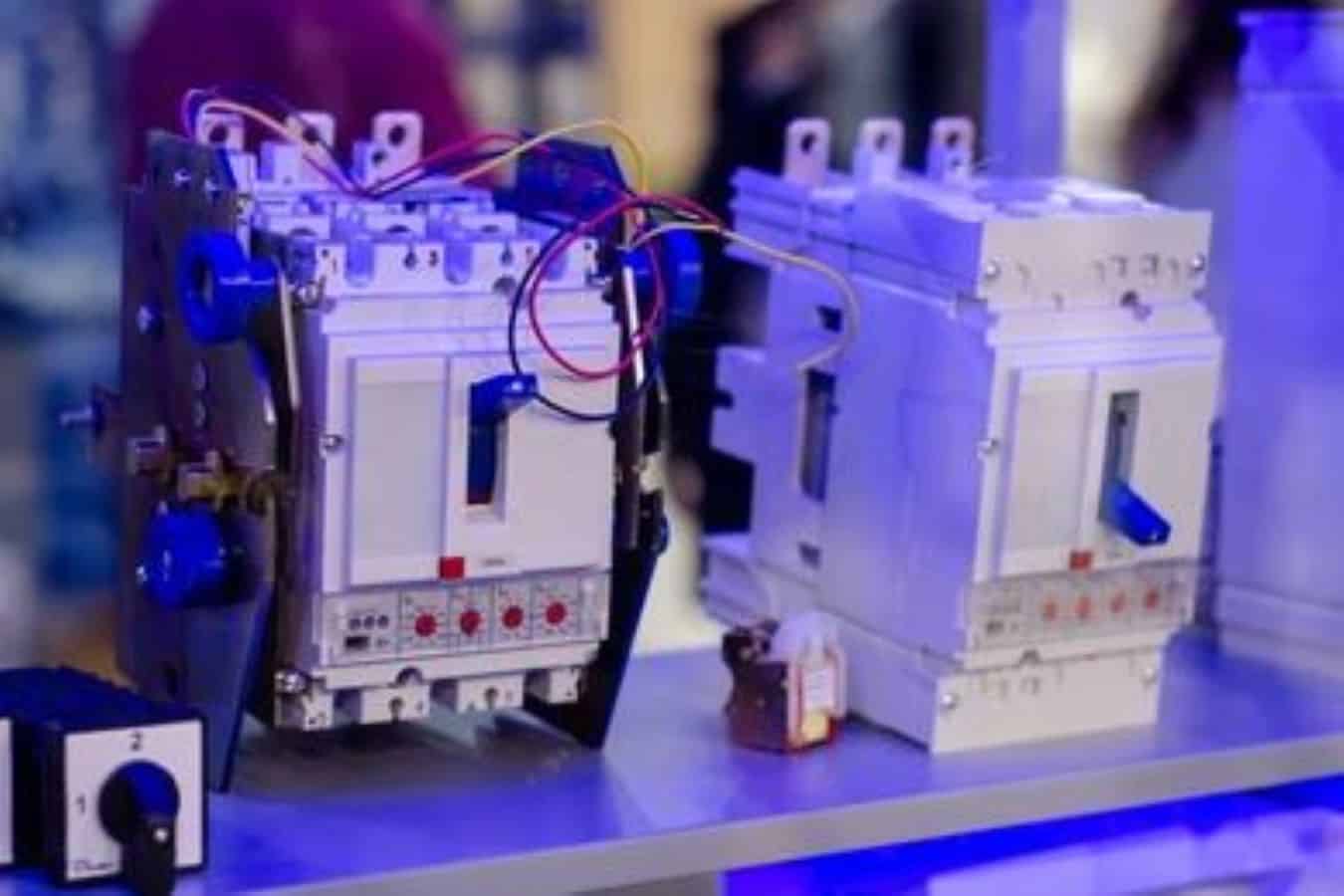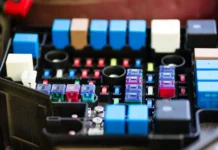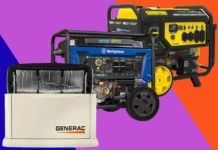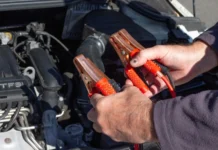Do you need knowledge on how to install a transfer switch for a generator? Then, go through this article to get the information you require.
This powerversity guide is a complete guide that will enable you to install a transfer switch for your generator.
It also contains background information on what a transfer switch is.
For the sake of clarity, this article is presented in sections.
An overview of transfer switches is provided at the beginning. After this, the next section will explain how the two transfer switches work.
Thereafter, the pros and cons of the two transfer switches are discussed.
Subsequently, you will find the factors you need to consider when installing a transfer switch.
Then, the next section will contain the precautions you must take before and while installing a transfer switch to avoid casualties.
Furthermore, I will answer some frequently asked questions on how to install a transfer switch for a generator.
Then, I will conclude with my final thoughts.
Therefore, I urge you to sit tight and enjoy your reading. Then, try to click on the links for more explanations.
How To Install Transfer Switch For A Generator: Overview
Faults in electrical systems can lead to failure and a lack of electrical supply. As a result, there will be either a blackout or a brownout.
Thus, there is always a need for an alternative source of power supply.
This alternative power supply is aimed at supplying some essential parts of your domestic electrical system. E.g. lighting points, heating systems, etc.
However, this alternative source of energy could be a solar energy system or a portable generator.
Many homes and office establishments have standby generators that supply them with electricity in the event of a power outage.
Therefore, you will need to disconnect the load from the public supply and connect it to an alternative energy source. This connection and disconnection should be made safely to avoid electrocution.
Hence, there is a need for a device that can safely disconnect and connect two sources with an electrical load.
Thus, a transfer switch is an electrical device that allows safe connection and disconnection of electricity to a load.
This transfer switch could be a single-phase or 3-phase transfer switch.
Also, transfer switches could be automatic or manual.
An automatic transfer switch disconnects and connects to sources by itself. A manual transfer switch needs an operator to operate it.
How To Install Transfer Switch For A Generator: How It Works
Transfer switches work according to their type. Basically, there are two types of transfer switches, manual and automatic transfer switches.
Manual Transfer Switches
Manual transfer switches need an operator to operate them. usually by throwing a lever on the side of the switch.
This switch consists of a lever that moves a connector inside the switch.
Also, the switch has two terminals. one for the utility supply and the other for the alternative energy source.
However, the load is connected to a terminal on the metal part of the lever inside the switch.
When the operator throws the lever at any of the terminals (supply or alternative source), it disconnects from one of the sources and connects with the other.
There are some manual transfer switches that operate electronically. In this type of transfer switch, a push button does the work of the lever.
The push button uses an electronically operated mechanical device to trigger the switch.
You can refer to this switch as a “non-automatic transfer switch.” Usually, you will find the push switch on the transfer switch itself or somewhere else.
Non-automatic transfer switches are convenient when the transfer switch is not easy to access.
Pros Of Manual Transfer Switches
- They are easy to install.
- Also, they are not expensive when compared with automatic switches.
- Even so, they are easy to maintain.
- It gives the user complete control over power flow.
Cons Of Manual Transfer Switches
- It requires an operator to operate it.
- Also, it might take a little longer to change over, especially if the generator is not near the building.
- Even so, it is unsuitable for a larger building that needs constant power.
Automatic Transfer Switches
Automatic transfer switches have sophisticated control mechanisms that allow them to operate without an operator.
Instead, they consist of a smart controller that decides when to activate the switch according to the program written on it.
Some automatic switches have auto-generator starters. These starters switch on the generator automatically when there is a power outage and switch the supply to the generator.
However, the switch may automatically switch back to the utility when power is restored and shut down the generator equally.
It does all of this without human intervention.
You can also program the controller of the switch to react automatically, within preset parameters, to changes on the grid.
Pros Of Automatic Switches
- It is suitable for permanently installing standby generators.
- In the event of a power outage, the generator will start automatically.
- Also, the automatic transfer switch can detect any fluctuation in the main supply through its sensors.
- Even so, it allows a seamless transition from the main source to the generator and vice versa.
Cons Of Automatic Switches
- They are more expensive to install.
- Also, their installation is complex.
- Even so, they require more maintenance.
- It takes up more space than the manual transfer switch.
Factors To Consider When Installing A Transfer Switch For Your Generator
When installing a transfer switch for your home, you need to consider some factors.
These factors will enable you to choose and install a transfer switch that will function properly with your generator and load circuits.
Therefore, below are the factors you need to consider:
Type Of Transfer Switch
As mentioned above, there are two types of transfer switches that operate either manually or automatically.
More so, you can operate the manual switch by throwing the lever handle or by pushing a switch, depending on the type you have.
The automatic switch operates by itself and does not need an operator to switch from one power source to another.
Whereas, you will need to switch between power sources when you use a manual transfer switch.
If you are working in an office that needs an uninterrupted power supply, then you need an automatic transfer switch.
However, this switch is complex, expensive, and difficult to maintain.
Number Of Phases
A 3-phase load system requires a 3-phase generator and a 3-phase transfer switch. Mostly, 3-phase generators used for domestic purposes power the entire building.
However, 3-phase transfer switches are available as manual transfer switches or automatic transfer switches.
The 3-phase manual transfer switch is easy to install since it requires a direct connection to the terminals.
On the other hand, the 3-phase automatic transfer switch is a bit complex as it requires certain devices like timers, relays, etc. to be installed.
Click here to see details on how to connect a 3-phase automatic transfer switch and how it operates.
If the load system in your home is single-phase, you need a single-phase transfer switch and a single-phase generator.
Depending on the generator’s power rating, some generators, especially portable generators, might not be able to power every circuit in your home.
Therefore, you can decide to connect the essential parts of your domestic installation only to the transfer switch. This is easier with the manual switch and a bit more complex with the automatic switch.
Number Of Circuits
Another point you need to note when installing a transfer switch is the number of circuits you intend to connect to it. The power rating of the generator determines this.
Suppose the generator power rating is not enough for the entire electrical load in the building.
In that case, you could connect only the essential parts to the generator through the transfer switch.
In this case, the number of subcircuits you intend to connect to the transfer switch and generator is important to avoid overload.
Generally, you can only do this when the supply to your building is a single phase. 3-phase generators supply the entire building.
Total Amperage
The amperage of a building is the amount of current that flows through its electrical circuit during normal operation.
The total amperage is what determines the current rating of the transfer switch. Generally, a single-phase supply to your home carries a voltage of about 110 or 220 volts, depending on your location.
Hence, the amperage determines the size of the transfer switch. Thus, the amperage is another factor you need to consider.
Voltage
The voltage rating is the amount of potential difference (in volts) in which an electrical load operates. For example, in regions where the single-phase power supply is at 110 volts, there are some devices that operate at 220 volts.
Thus, you connect this equipment to two circuit breakers on the main distribution board. Hence, you also need to consider the voltage rating of some equipment you need to connect to the transfer switch.
How To Install Transfer Switch For A Generator: Precautions
Installing a transfer switch in an already existing electrical installation or a new installation involves directly working with electricity. This could be dangerous if you are not careful with it.
Hence, you need to take certain precautions to avoid casualties. The precautions you should take while installing a transfer switch include:
- Ensure that you do not work on any electrical power system, domestic or industrial, during rainfall or cloudy conditions.
- Also, use the correct tool to perform any task.
- Even so, ensure the handle of all the tools you are using is insulated.
- Cut-off power from the main circuit breaker before you begin any electrical work on an already existing electrical installation.
- More so, ensure all the tools and materials you need for the installation are available before you begin.
- Do not operate your generator in a closed area. Ensure that it is about 20 feet away from your home.
- Ensure to put on safety devices while working.
How To Install Transfer Switch For A Generator: Procedures
The following are the step-by-step procedures on how to install a transfer switch for a generator. You need to follow these steps to install a manual transfer switch on your generator.
This transfer switch contains a number of sub-circuits, and it serves as an emergency panel.
Step 1
Locate a suitable position for your transfer switch. This position should be close to the main distribution board.
Then, turn off the utility’s power supply before you begin working on the main distribution panel.
Step 2
Get a suitable circuit breaker with a current rating that is a bit higher than that of the transfer switch that matches your panel. For example, for a 30 amp transfer switch, a 50 amp circuit breaker will work excellently.
Then, slot this circuit breaker into your main distribution panel. Usually, the circuit breaker should be a 220-volt circuit breaker that will feed the transfer switch with electricity.
Step 3
The transfer switch comes with four 10mm2 single-core wires (red, black, green, and white). These wires supply current from the main distribution panel to the transfer switch.
The white wire is for neutral, the green is for ground, and the black and red wires are the live (hot) wires. Each operates on 110 or 220 volts, depending on the country.
Furthermore, connect the white wire to the neutral bar and the green wire to the ground terminal or the main distribution panel bar.
Thereafter, connect the black and red wires to their respective terminals on the 50-amp circuit breaker you installed in the panel.
You can pass the wires through conduits to make the work neat. Also, you can use zip ties to hold the wires in the panel.
Step 4
Now disconnect the circuits you want to operate on the transfer switch from the circuit breakers in the main distribution panel. These circuits could be your refrigerator, lighting, etc.
Ensure that you connect the circuit on the emergency panel to a circuit breaker. Moreover, ensure the rating is equivalent to that of the main panel where you disconnected the circuit.
That is, disconnect a circuit from a 15-amp circuit breaker in the main panel. Then, ensure to connect to a 15-amp circuit breaker on the emergency panel.
Each circuit breaker inside the emergency panel has a wire. To connect any circuit, remove the wire that connects it to the circuit breaker in the main panel.
Then, twist-tie it with the wire from the circuit breaker in the transfer switch.
You can use a wago to connect the two wires. But first, connect all the white wires (neutral) from the transfer switch to the neutral bar in the main panel.
Step 5
On the outside, attach the receptacle that houses the generator plug-in to the wall. Then, wire the plug with a 10 mm wire.
Connect each wire to its corresponding terminal on the generator plug-in.
This wire will feed your transfer switch from the generator. Hence, you can pass it through a conduit to make your job neat.
After connecting the generator plug-in outside, cover the receptacle and screw in the nut.
At the transfer switch, connect the wires from the generator plug-in outside to their respective terminals on the transfer switch.
This connection goes for a manual transfer switch that connects the essential parts of your domestic installation to the utility supply and your generator. However, click here to watch a video for a visual explanation.
Also, you can get details on how to connect an automatic transfer switch to work on an entire domestic installation here.
How To Install Transfer Switch For A Generator: Frequently Asked Questions
If the generator cannot power the entire installation, you install the automatic change between your main panel and a sub-panel. Hence, you connect all essential loads to the sub-panel.
If the generator can power the entire building, you need to connect the transfer switch before the main panel, as a sub-pane might not be required.
Yes. You can install a transfer switch for your generator by yourself if you have a good experience with electrical systems.
You will need 10 gauge or larger to connect a 30-amp inlet box to a transfer switch.
1. Circuit breaker type.
2. Contactor type.
To produce electricity, your generator should operate at about 1000 RPM to 1800 RPM.
An automatic transfer switch with an auto generator start can start the generator. When there is a power outage on the utility supply, the automatic transfer switch sends a signal to the generator to start.
Yes. They prevent the utility power supply and the generator from supplying power to your household at the same time.
Manufacturers design auto transfer switches with a life expectancy of 100,000 operations.
Yes.
You can plug your generator into an outside outlet if you turn off your utility power supply switch.
Electricity and water can create an electrical shock. Hence, do not run a generator in the rain or other inclement weather.
How To Install Transfer Switch For A Generator: My Final Thoughts
Transfer switches enable safe connection and disconnection of the generator and utility supply.
It could either be an automatic transfer switch or a manual transfer switch.
The automatic switch operates by itself, while the manual switch requires an operator.
Some automatic switches allow you to also operate them manually.
For a more detailed explanation, ensure to open all links in this article.
I hope you found this article helpful to you.
Then, fill out the “Leave A Reply” form at the end of this article to share your thoughts.
You might be interested in reading more articles like this one. Please visit the following pages:




